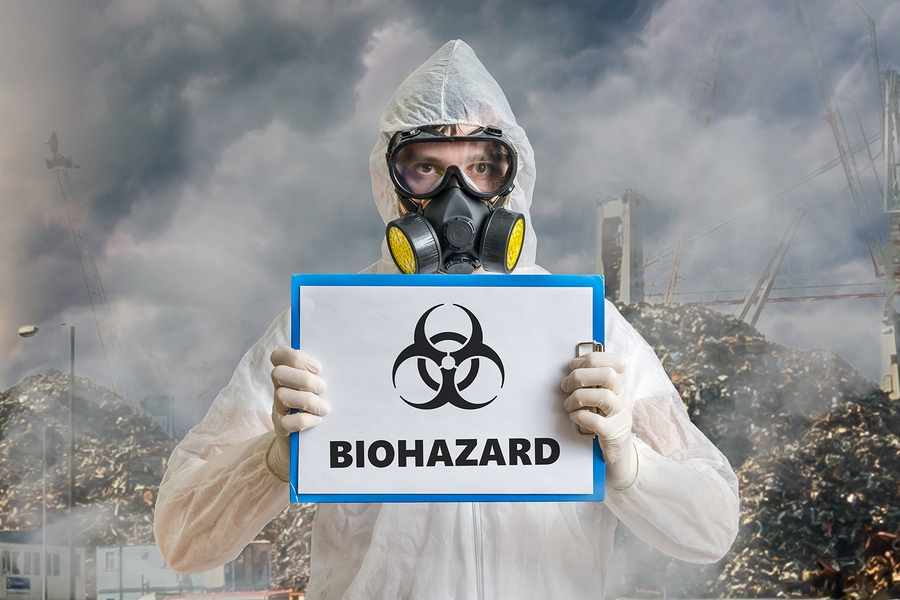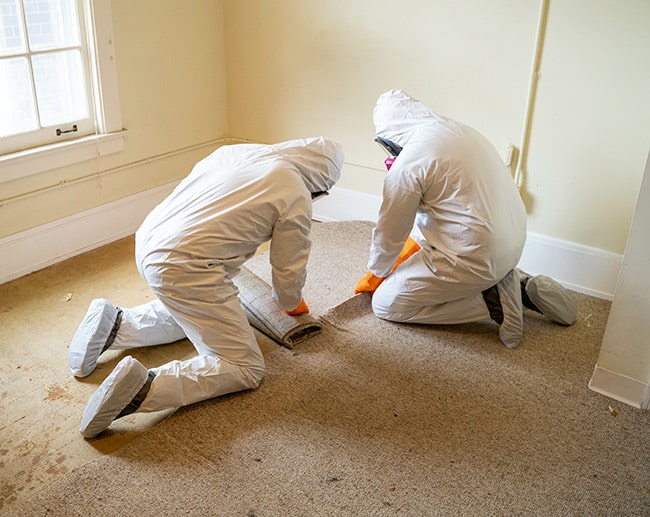Decomposition Death Clean Up: Specialized and Respectful Remediation
Decomposition Death Clean Up: Specialized and Respectful Remediation
Blog Article
Specialist Biohazard Cleansing and Purification for Blood, Bodily Fluids, and Hazardous Products
The prospective wellness risks linked with exposure to biohazards emphasize the crucial demand for thorough handling and thorough cleanup. As we browse the complex landscape of biohazard cleaning, recognizing the subtleties of guidelines, conformity, and the specialized tools at play ends up being vital in guaranteeing a thorough and risk-free decontamination procedure.
Health And Wellness Dangers of Biohazard Direct Exposure
Direct exposure to biohazards presents considerable health and wellness threats that can result in serious repercussions for people and neighborhoods alike. Biohazards include a wide variety of organic compounds, including blood, physical fluids, mold, microorganisms, infections, and other potentially transmittable materials. When people enter into call with these biohazards, whether via mishaps, incorrect handling, or ecological direct exposure, they encounter the risk of contracting severe diseases or conditions.
One of the main wellness threats related to biohazard exposure is the transmission of infectious conditions. Bloodborne microorganisms such as HIV, hepatitis B and C, and various bacteria can be existing in biohazardous materials, posturing a direct risk to human wellness. Breathing in airborne biohazards like mold spores or coming right into call with polluted surfaces can likewise cause respiratory system issues, allergies, and other negative wellness results.
Additionally, biohazard exposure can have long-term wellness effects, with some illness manifesting years after the preliminary call (Blood Cleanup). Consequently, it is important to prioritize proper biohazard cleansing and decontamination to alleviate these wellness risks and make sure the security of individuals and communities

Specialized Educating for Biohazard Cleanup
When it comes to taking care of biohazard clean-up successfully and safely, specialized training plays a basic function in ensuring correct decontamination procedures are adhered to. Biohazard cleanup calls for particular expertise and skills to effectively reduce threats connected with bloodborne microorganisms, bodily liquids, and unsafe materials. Experts learnt biohazard cleaning undertake rigorous guideline on exactly how to securely manage, eliminate, and deal with biohazardous products to stop contamination and direct exposure.
Specialized training for biohazard cleaning covers a range of important topics, consisting of appropriate individual protective tools (PPE) usage, bloodborne virus awareness, decontamination techniques, and unsafe waste disposal protocols. People learnt biohazard cleaning are geared up with the essential proficiency to assess contamination degrees, determine potential dangers, and carry out suitable clean-up procedures in conformity with regulatory requirements.
Continual training and education and learning are vital in the field of biohazard clean-up to stay upgraded on the most recent decontamination technologies, safety protocols, and laws. By buying specialized training, biohazard clean-up experts can effectively reply to emergency situation clean-up circumstances and safeguard both public health and the atmosphere.
Relevance of Appropriate Decontamination Strategies
Making use of correct decontamination techniques is vital in biohazard cleaning to effectively get rid of harmful products and reduce wellness threats. Effective purification not just makes certain the elimination of noticeable traces of blood, physical liquids, and other biohazards but additionally targets why not try this out unnoticeable microorganisms that might present serious wellness threats otherwise properly removed. By following rigorous purification methods, educated professionals can significantly reduce the threat of direct exposure to hazardous microbes, infections, and microorganisms that could lead to infections or illness.
Appropriate purification techniques include using specific tools and anti-bacterials that are particularly created to reduce the effects of biohazards effectively. Complete cleaning and sanitation of infected areas are important to stop the spread of microorganisms and ensure a risk-free environment for owners. Additionally, the proper disposal of biohazardous waste following purification procedures is important in avoiding contamination of various other surfaces or people.

Devices and Devices for Safe Cleaning
When dealing with blood, bodily fluids, or unsafe products, biohazard cleaning experts rely on specialized equipment to reduce direct exposure risks and thoroughly decontaminate the damaged area. Additionally, biohazard cleaning sets consisting of anti-bacterials, absorbing materials, and biohazard bags are used to safely have and dispose of infected products.
Advanced cleansing devices like hospital-grade anti-bacterials, HEPA-filtered vacuum cleaners, and fogging machines are used to sterilize surface areas and get rid of biohazards efficiently. Specialized devices such as sharps containers and biohazard garbage disposal containers are utilized to safely handle sharp objects and biohazardous waste materials. By using the appropriate equipment and devices, biohazard cleaning specialists can make sure a comprehensive clean-up procedure that prioritizes safety and lessens health dangers for both workers and owners of the afflicted room.
Rules and Conformity in Biohazard Cleansing
Proper adherence to guidelines and conformity criteria is vital in biohazard cleansing to guarantee the security of both employees and the setting. Federal government agencies such as OSHA (Occupational Security and Health Management) and the EPA (Epa) have developed specific guidelines for biohazard cleaning treatments to lessen health risks and environmental contamination. These regulations cover a variety of aspects including the handling, transportation, and disposal of biohazardous products, along with the needed training and protective tools needed for personnel associated with the cleaning procedure.
Biohazard cleaning business need to stay current with these laws to ensure that their operations fulfill the needed security requirements. Failure to comply with these guidelines can cause severe consequences, including fines, legal action, and endangering the wellness of people and the atmosphere. By adhering to stringent laws and conformity actions, biohazard cleansing companies can effectively reduce dangers and ensure a thorough and safe cleaning process for all parties included.
Conclusion
In conclusion, biohazard cleansing and decontamination need specific biohazard cleanup technician training, correct methods, and adherence to guidelines. Direct exposure to blood, bodily fluids, and visit this site unsafe products positions significant wellness risks, making it important to utilize the right tools and devices for safe cleanup. By adhering to strict methods and standards, specialists can properly minimize the risks related to biohazard direct exposure and ensure the security of both themselves and others.
As we navigate the elaborate landscape of biohazard cleaning, recognizing the nuances of guidelines, conformity, and the specialized equipment at play comes to be vital in guaranteeing a comprehensive and risk-free purification process. (Blood Cleanup)
When it comes to taking care of biohazard cleaning efficiently and securely, specialized training plays a basic function in guaranteeing proper purification procedures are complied with.Using proper purification strategies is critical in biohazard clean-up to efficiently eliminate harmful products and reduce wellness dangers. Additionally, biohazard cleansing sets containing disinfectants, absorbent materials, and biohazard bags are used to securely include and dispose of infected products.
Government firms such as OSHA (Occupational Security and Wellness Administration) and the EPA (Environmental Security Agency) have actually developed particular standards for biohazard clean-up procedures to minimize health and wellness threats and environmental contamination.
Report this page